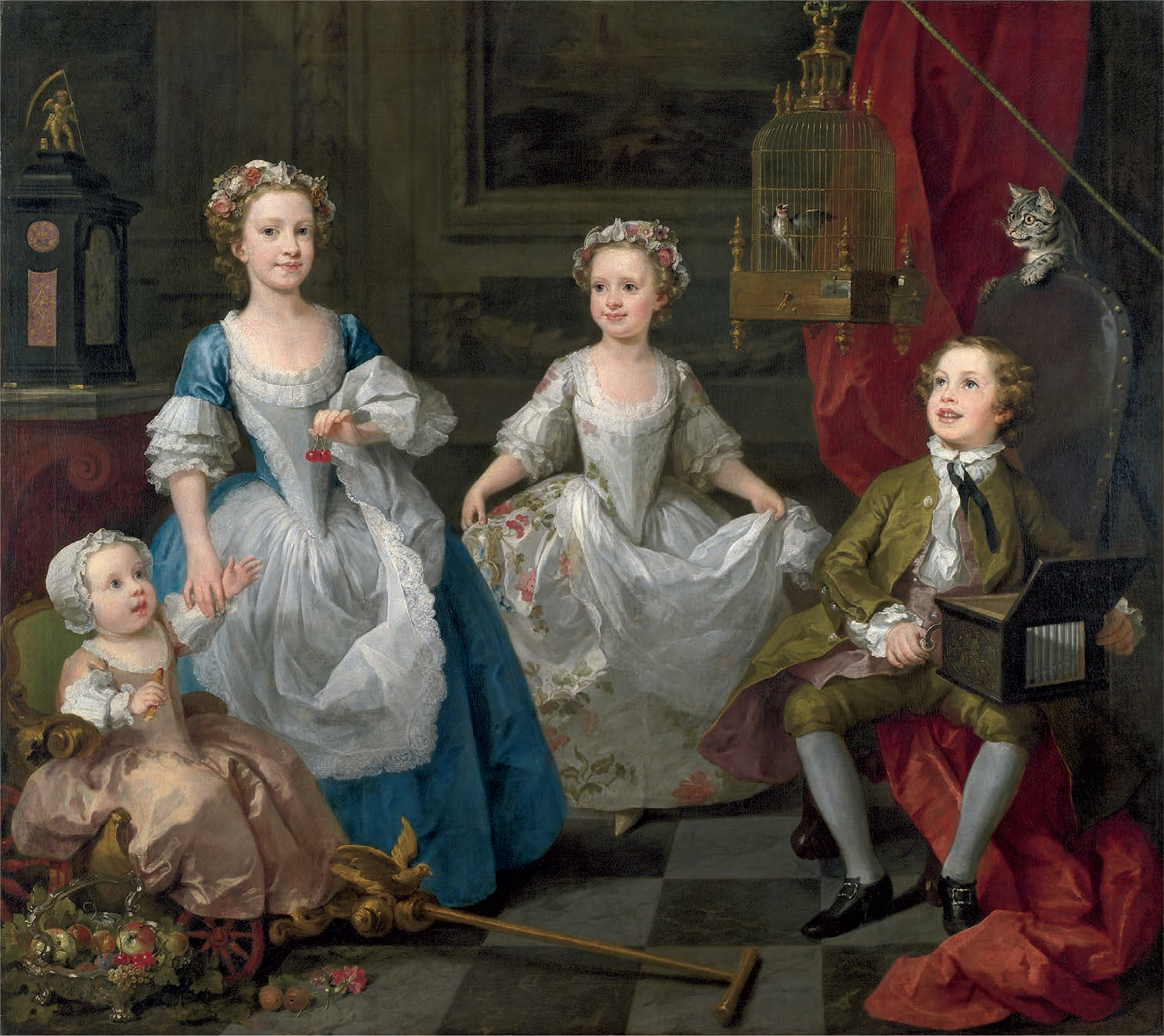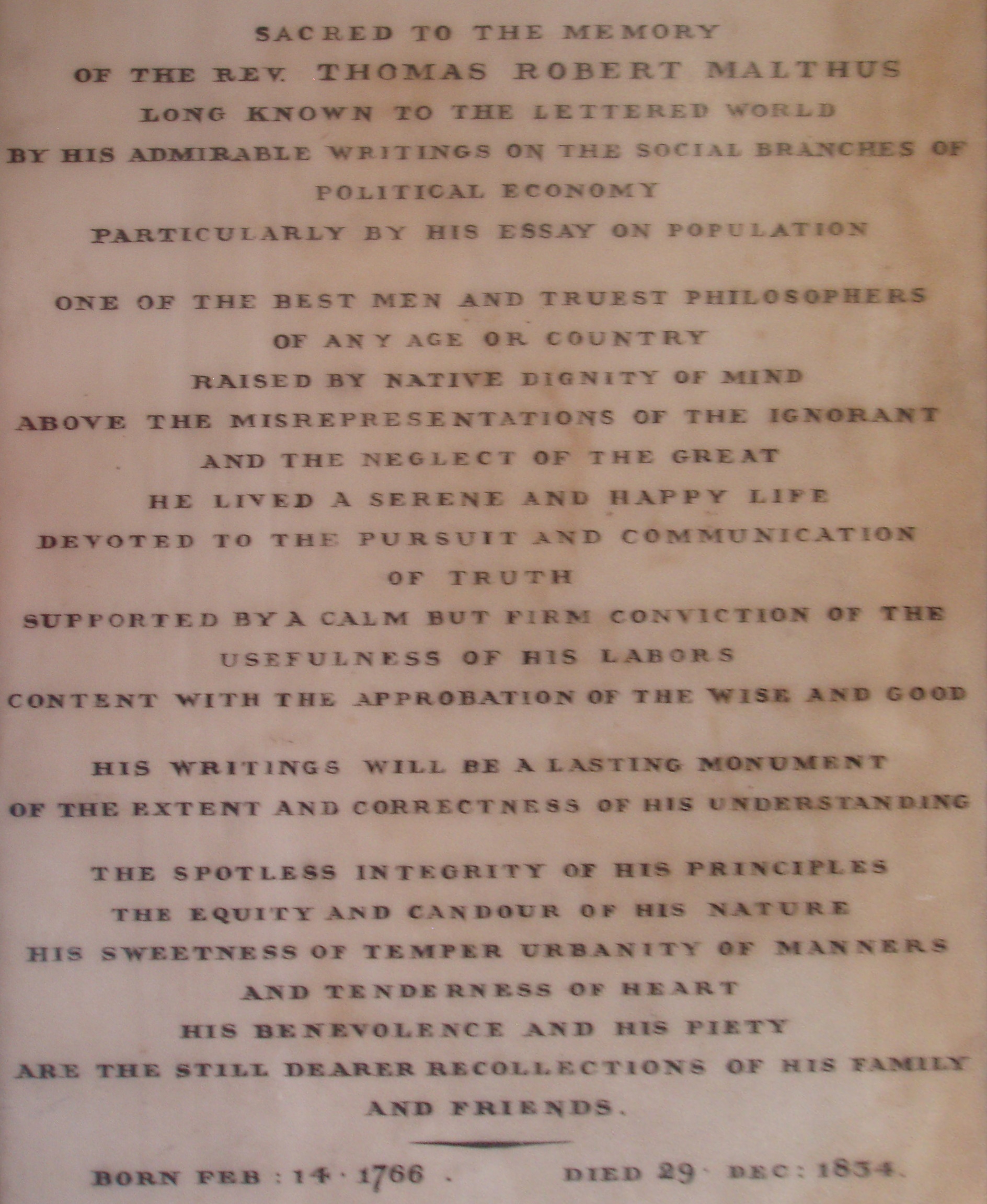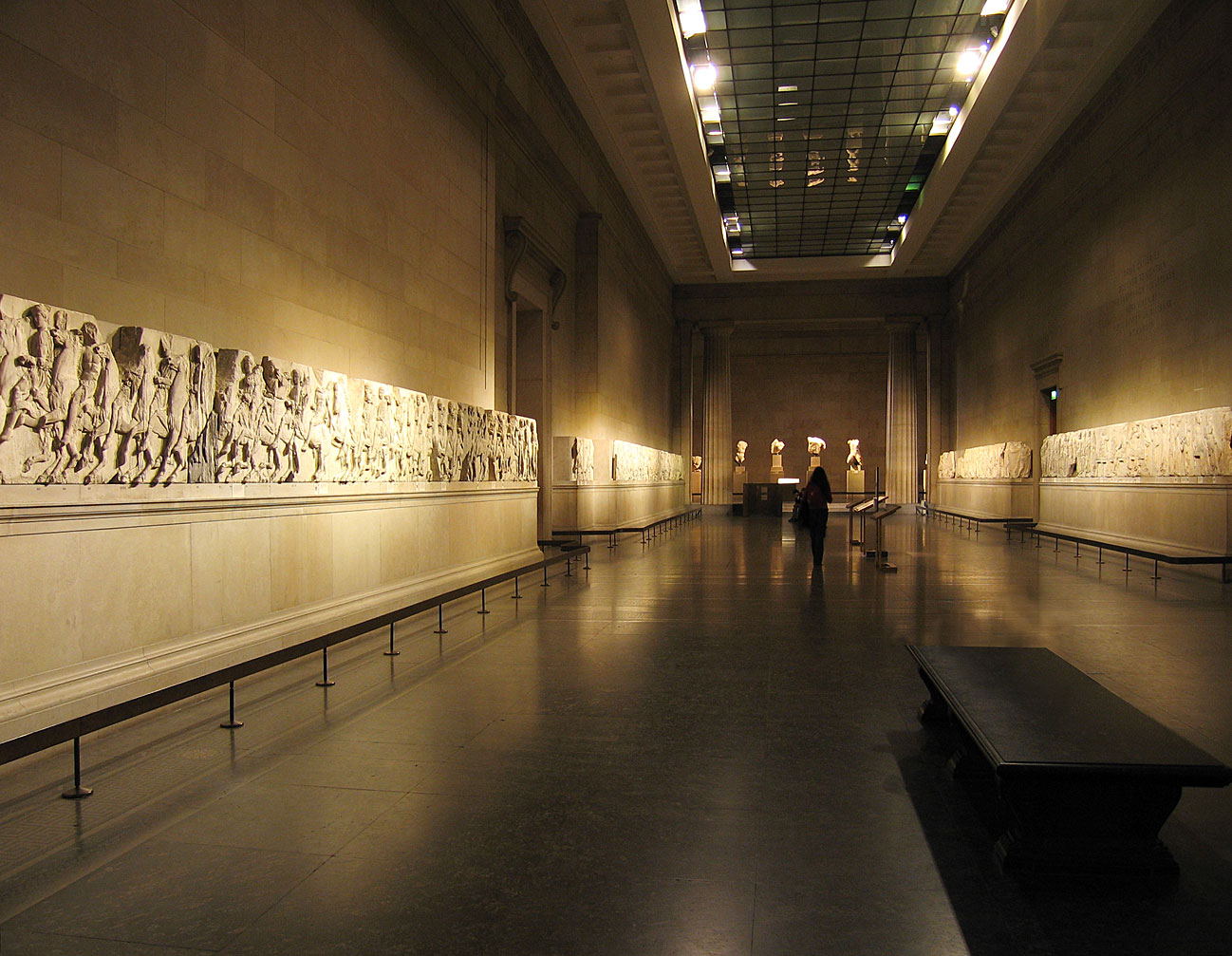|
Daniel Graham (apothecary)
Daniel Graham (c. 1695 - March 1778) was apothecary to King George II, King George III and Chelsea College Hospital. He was the son of Thomas Graham (c. 1666 - 1733) who was apothecary to King George I and George II, and was apothecary general to the British army. ''The Graham Children'' Around 1742, Daniel Graham commissioned William Hogarth to paint a portrait of his children. Hogarth produced ''The Graham Children'', one of his most successful conversation pieces (an informal group portrait of family or friends, often engaged in conversation or some other kind of activity). From left to right in the picture are Thomas, born 1740 and dressed in skirts as was typical for small boys until they were breeched, Henrietta (later mother of the economist Thomas Robert Malthus), Anna Maria and Richard.Note the children are misidentified in Einberg's ''Manners & Morals'', corrected in her ''Hogarth the Painter''. The painting is noted for its many references to mortality, the passing ... [...More Info...] [...Related Items...] OR: [Wikipedia] [Google] [Baidu] |
William Hogarth 047
William is a masculine given name of Norman French origin.Hanks, Hardcastle and Hodges, ''Oxford Dictionary of First Names'', Oxford University Press, 2nd edition, , p. 276. It became very popular in the English language after the Norman conquest of England in 1066,All Things William"Meaning & Origin of the Name"/ref> and remained so throughout the Middle Ages and into the modern era. It is sometimes abbreviated "Wm." Shortened familiar versions in English include Will, Wills, Willy, Willie, Liam, Bill, and Billy. A common Irish form is Liam. Scottish diminutives include Wull, Willie or Wullie (as in Oor Wullie or the play ''Douglas''). Female forms are Willa, Willemina, Wilma and Wilhelmina. Etymology William is related to the German given name ''Wilhelm''. Both ultimately descend from Proto-Germanic ''*Wiljahelmaz'', with a direct cognate also in the Old Norse name ''Vilhjalmr'' and a West Germanic borrowing into Medieval Latin ''Willelmus''. The Proto-Germanic name is a ... [...More Info...] [...Related Items...] OR: [Wikipedia] [Google] [Baidu] |
Apothecary
''Apothecary'' () is a mostly archaic term for a medical professional who formulates and dispenses '' materia medica'' (medicine) to physicians, surgeons, and patients. The modern chemist (British English) or pharmacist (British and North American English) now perform this role. In some languages and regions, the word "apothecary" is still used to refer to a retail pharmacy or a pharmacist who owns one. Apothecaries' investigation of herbal and chemical ingredients was a precursor to the modern sciences of chemistry and pharmacology. In addition to dispensing herbs and medicine, apothecaries offered general medical advice and a range of services that are now performed by other specialist practitioners, such as surgeons and obstetricians. Apothecary shops sold ingredients and the medicines they prepared wholesale to other medical practitioners, as well as dispensing them to patients. In 17th-century England, they also controlled the trade in tobacco which was imported as a me ... [...More Info...] [...Related Items...] OR: [Wikipedia] [Google] [Baidu] |
George II Of Great Britain
, house = Hanover , religion = Protestant , father = George I of Great Britain , mother = Sophia Dorothea of Celle , birth_date = 30 October / 9 November 1683 , birth_place = Herrenhausen Palace,Cannon. or Leine Palace, Hanover , death_date = , death_place = Kensington Palace, London, England , burial_date = 11 November 1760 , burial_place = Westminster Abbey, London , signature = Firma del Rey George II.svg , signature_alt = George's signature in cursive George II (George Augustus; german: link=no, Georg August; 30 October / 9 November 1683 – 25 October 1760) was King of Great Britain and Ireland, Duke of Brunswick-Lüneburg (Hanover) and a prince-elector of the Holy Roman Empire from 11 June 1727 ( O.S.) until his death in 1760. Born and brought up in northern Germany, George is the most recent British monarch born outside Great Britain. The Act of Settlement 1701 and the Acts of Union 1707 positioned his grandmother, ... [...More Info...] [...Related Items...] OR: [Wikipedia] [Google] [Baidu] |
King George III
George III (George William Frederick; 4 June 173829 January 1820) was King of Great Britain and of Ireland from 25 October 1760 until the union of the two kingdoms on 1 January 1801, after which he was King of the United Kingdom of Great Britain and Ireland until his death in 1820. He was the longest-lived and longest-reigning king in British history. He was concurrently Duke and Prince-elector of Brunswick-Lüneburg ("Hanover") in the Holy Roman Empire before becoming King of Hanover on 12 October 1814. He was a monarch of the House of Hanover but, unlike his two predecessors, he was born in Great Britain, spoke English as his first language and never visited Hanover. George's life and reign were marked by a series of military conflicts involving his kingdoms, much of the rest of Europe, and places farther afield in Africa, the Americas and Asia. Early in his reign, Great Britain defeated France in the Seven Years' War, becoming the dominant European power in North America ... [...More Info...] [...Related Items...] OR: [Wikipedia] [Google] [Baidu] |
Thomas Graham (apothecary)
Thomas Graham (c. 1666 - 14 May 1733) was apothecary to King George I and George II, and was apothecary general to the British army. Graham served his apprenticeship in Scotland, from which country he hailed, and was admitted as a "foreign brother" of the Society of Apothecaries on 14 September 1698. Thomas died at his home in Pall Mall in London and was buried at St Mary's, Harrow on the Hill, where a wall plaque commemorates him and his wife Anne. His son was Daniel Graham (c. 1695 - 1788) who was apothecary to King George II, King George III and Chelsea College Hospital. A granddaughter- Daniel's daughter, Henrietta- was the mother of Robert Malthus Thomas Robert Malthus (; 13/14 February 1766 – 29 December 1834) was an English cleric, scholar and influential economist in the fields of political economy and demography. In his 1798 book '' An Essay on the Principle of Population'', Mal ....Essays in Biography, J. M. Keynes, Harcourt, Brace & Co., 1933, p. 96 Refe ... [...More Info...] [...Related Items...] OR: [Wikipedia] [Google] [Baidu] |
King George I Of Great Britain
George I (George Louis; ; 28 May 1660 – 11 June 1727) was King of Great Britain and Ireland from 1 August 1714 and ruler of the Electorate of Hanover within the Holy Roman Empire from 23 January 1698 until his death in 1727. He was the first British monarch of the House of Hanover as the most senior Protestant descendant of his great-grandfather James VI and I. Born in Hanover to Ernest Augustus and Sophia of Hanover, George inherited the titles and lands of the Duchy of Brunswick-Lüneburg from his father and uncles. A succession of European wars expanded his German domains during his lifetime; he was ratified as prince-elector of Hanover in 1708. After the deaths in 1714 of his mother Sophia and his second cousin Anne, Queen of Great Britain, George ascended the British throne as Anne's closest living Protestant relative under the Act of Settlement 1701. Jacobites attempted, but failed, to depose George and replace him with James Francis Edward Stuart, Anne's Catholic hal ... [...More Info...] [...Related Items...] OR: [Wikipedia] [Google] [Baidu] |
William Hogarth
William Hogarth (; 10 November 1697 – 26 October 1764) was an English painter, engraver, pictorial satirist, social critic, editorial cartoonist and occasional writer on art. His work ranges from realistic portraiture to comic strip-like series of pictures called "modern moral subjects", and he is perhaps best known for his series ''A Harlot's Progress'', ''A Rake's Progress'' and '' Marriage A-la-Mode''. Knowledge of his work is so pervasive that satirical political illustrations in this style are often referred to as "Hogarthian". Hogarth was born in London to a lower-middle-class family. In his youth he took up an apprenticeship with an engraver, but did not complete the apprenticeship. His father underwent periods of mixed fortune, and was at one time imprisoned in lieu of outstanding debts, an event that is thought to have informed William's paintings and prints with a hard edge. Influenced by French and Italian painting and engraving, Hogarth's works are mostly sat ... [...More Info...] [...Related Items...] OR: [Wikipedia] [Google] [Baidu] |
Conversation Piece
A conversation piece refers to a group portrait in a domestic or landscape setting depicting persons chatting or otherwise socializing with each other.Conversatiestuk at the Netherlands Institute for Art History The persons depicted may be members of a family as well as friends, members of a society or hunt, or some other grouping who are shown sharing common activities such as hunts, meals, or musical parties.British Conversation Pieces and Portraits of the 1700s at The National Gallery. Retrieved 20 March 2022. It was an especially popular genre in 18th-century England, beginning from the 1720 ... [...More Info...] [...Related Items...] OR: [Wikipedia] [Google] [Baidu] |
Breeching (boys)
Breeching was the occasion when a small boy was first dressed in breeches or trousers. From the mid-16th century until the late 19th or early 20th century, young boys in the Western world were unbreeched and wore gowns or dresses until an age that varied between two and eight. Various forms of relatively subtle differences usually enabled others to tell little boys from little girls, in codes that modern art historians are able to understand but may be difficult to discern for the layperson. Breeching was an important rite of passage in the life of a boy, looked forward to with much excitement, and often celebrated with a small party. It often marked the point at which the father became more involved with the raising of a boy. Reasons The main reason for keeping boys in dresses was toilet training, or the lack thereof. The change was probably made once boys had reached the age when they could easily undo the rather complicated fastenings of many early modern breeches and tr ... [...More Info...] [...Related Items...] OR: [Wikipedia] [Google] [Baidu] |
Thomas Robert Malthus
Thomas Robert Malthus (; 13/14 February 1766 – 29 December 1834) was an English cleric, scholar and influential economist in the fields of political economy and demography. In his 1798 book '' An Essay on the Principle of Population'', Malthus observed that an increase in a nation's food production improved the well-being of the population, but the improvement was temporary because it led to population growth, which in turn restored the original per capita production level. In other words, humans had a propensity to utilize abundance for population growth rather than for maintaining a high standard of living, a view that has become known as the "Malthusian trap" or the "Malthusian spectre". Populations had a tendency to grow until the lower class suffered hardship, want and greater susceptibility to war famine and disease, a pessimistic view that is sometimes referred to as a Malthusian catastrophe. Malthus wrote in opposition to the popular view in 18th-century Europe tha ... [...More Info...] [...Related Items...] OR: [Wikipedia] [Google] [Baidu] |
Richard Robert Graham
Richard Robert Graham (8 January 1735 – 31 May 1816) was apothecary to the Chelsea College Hospital. He was the son of Daniel Graham (c. 1695 – 1788) who was apothecary to King George I and George II, and was apothecary general to the British army. ''The Graham Children'' Around 1742, Daniel Graham commissioned William Hogarth to paint a portrait of his children. Hogarth produced ''The Graham Children'', one of his most successful conversation pieces (an informal group portrait of family or friends, often engaged in conversation or some other kind of activity). From left to right in the picture are Thomas, born 1740 and dressed in skirts as was typical for small boys until they were breeched, Henrietta, Anna Maria and Richard.Note the children are misidentified in Einberg's ''Manners & Morals'', corrected in her ''Hogarth the Painter''. The painting is noted for its many references to mortality, the passing of time and the fragility of life as Thomas had died by the time th ... [...More Info...] [...Related Items...] OR: [Wikipedia] [Google] [Baidu] |
Lord Duveen
Joseph Duveen, 1st Baron Duveen (14 October 1869 – 25 May 1939), known as Sir Joseph Duveen, Baronet, between 1927 and 1933, was a British art dealer who was considered one of the most influential art dealers of all time. Life and career Joseph Duveen was British by birth, the eldest of thirteen children of Rosetta (Barnett) and Sir Joseph Joel Duveen, a Dutch-Jewish immigrant who had set up a prosperous import business in Hull. The Duveen Brothers firm became very successful and became involved in trading antiques. Duveen Senior died in 1908; Joseph took over the business, working in partnership with his late father's brother Henry J. Duveen. He had received a thorough and stimulating education at University College School. He moved the Duveen company into the risky, but lucrative, trade in paintings and quickly became one of the world's leading art dealers due to his good eye, sharpened by his reliance on Bernard Berenson, and skilled salesmanship. His success is famous ... [...More Info...] [...Related Items...] OR: [Wikipedia] [Google] [Baidu] |


_und_ihre_Kinder_Georg_August_und_Sophie_Dorothea.jpg)
.jpg)





